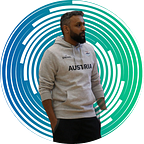the death of rote learning in youth sports: two more learning strategies
What separates great coaches from good ones?
The ability to adapt to each athlete’s learning style and foster creativity and problem-solving skills.
Yesterday, I shared three strategies that can help you do just that.
Today, I’ll round out the list with two more techniques that will help you take your coaching game to the next level.
Problem-Based Learning (PBL)
This method is focused on helping learners solve real-world problems.
Used appropriately within sports, it can help provide athletes with scenarios or challenges to solve which require them to develop their critical thinking.
A study by Taylor, Pearson, and Fraser (2013) found that PBL improved learning outcomes and increased motivation among young athletes.
Constraints-Led Approach (CLA)
The CLA focuses on manipulating constraints of activities to encourage specific learning outcomes.
This can be through varying rules, manipulating the playing area, introducing obstacles, or changing the number of players.
Renshaw, Chow, Davids, and Hammond (2010) found that the CLA led to improved decision-making abilities and skill acquisition in young tennis players.
Next Actions
By incorporating alternative teaching strategies, you can move beyond the limitations of rote learning and provide a more comprehensive and engaging learning experience for young athletes.
This will help your athletes improve their skills, become adaptable and keep them motivated and engaged.
